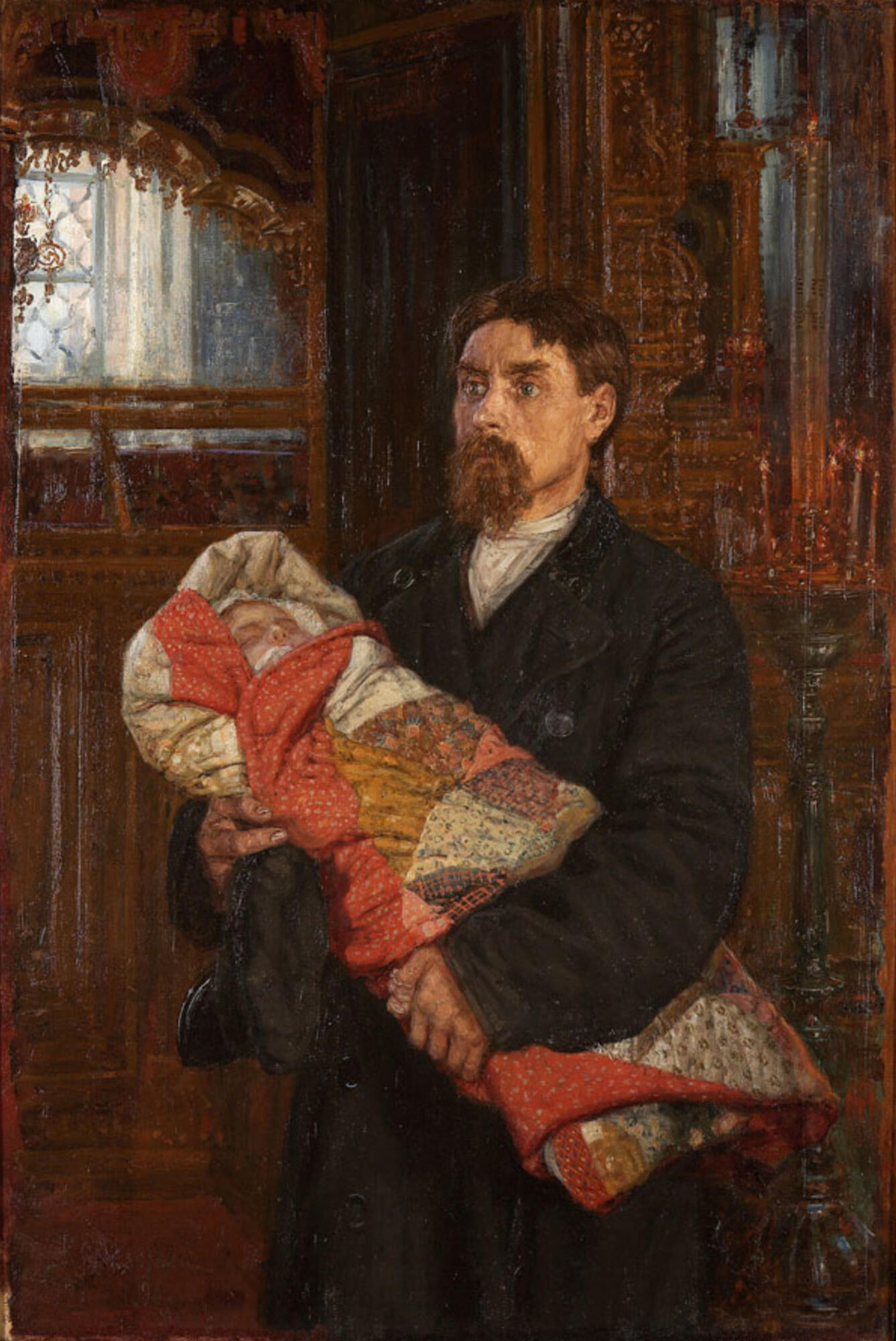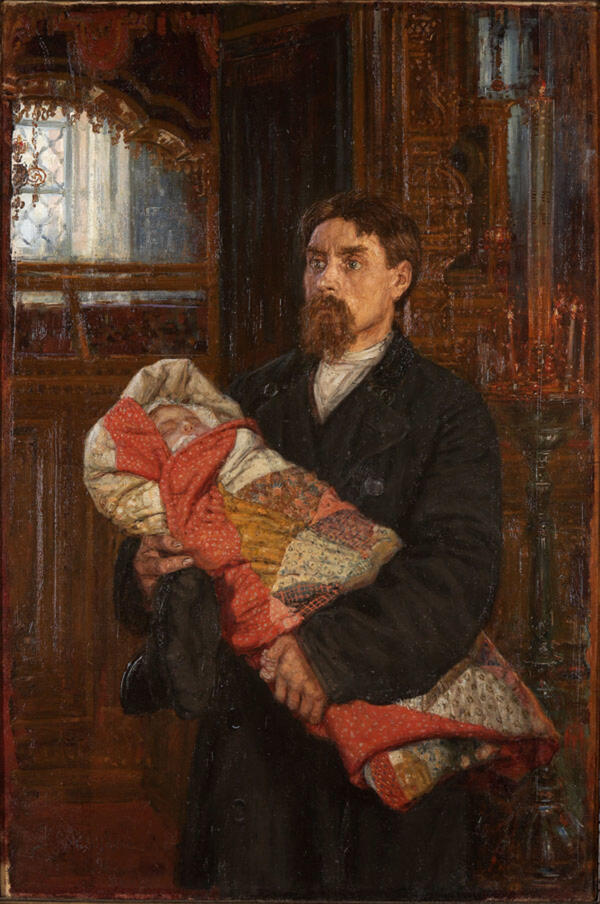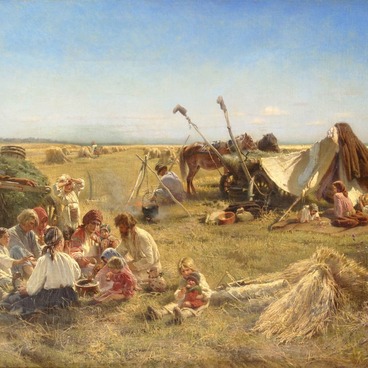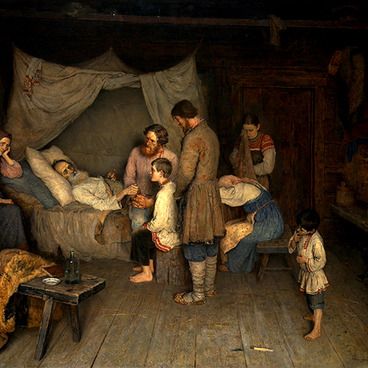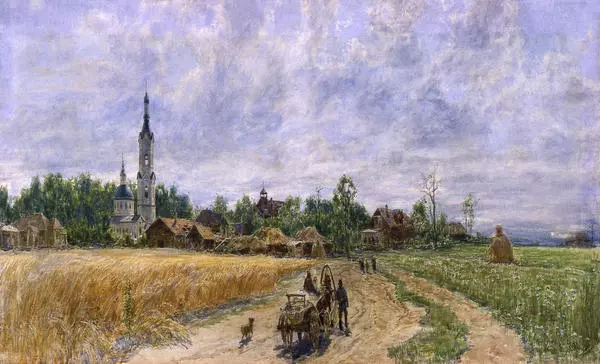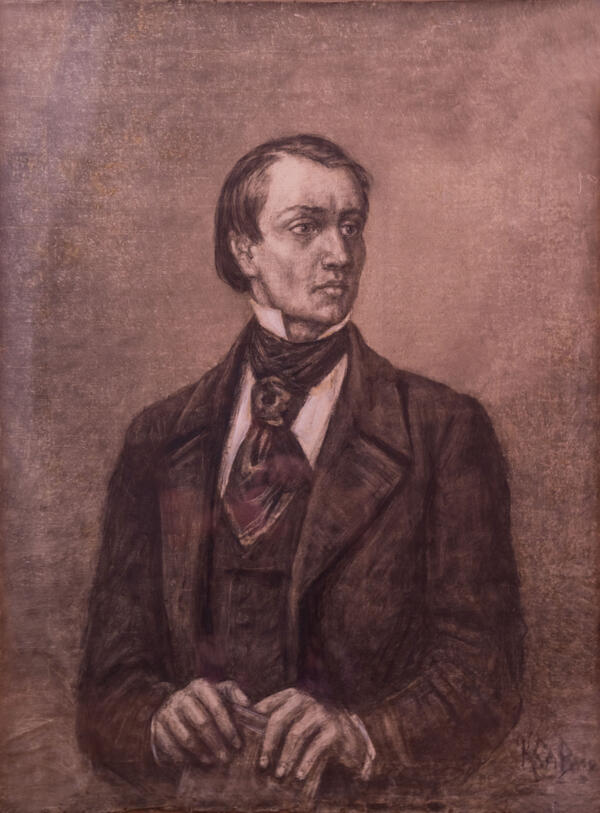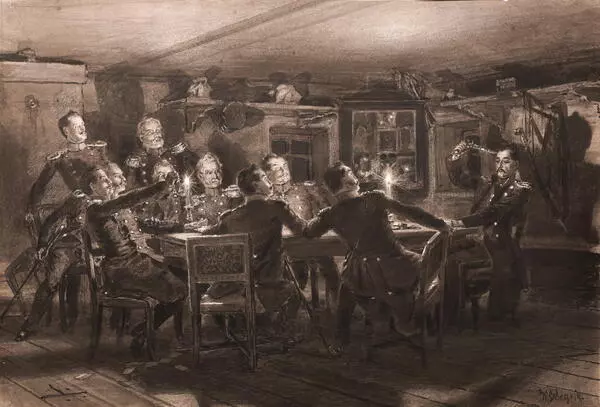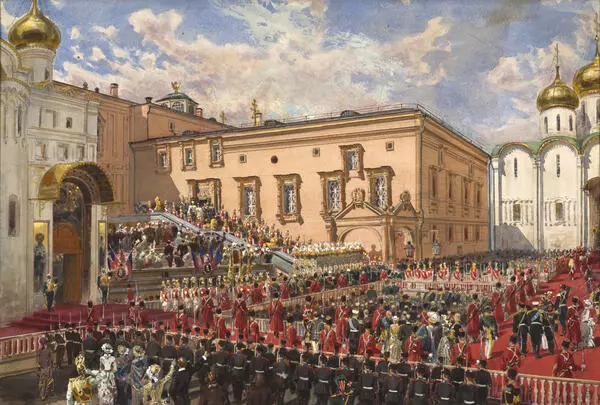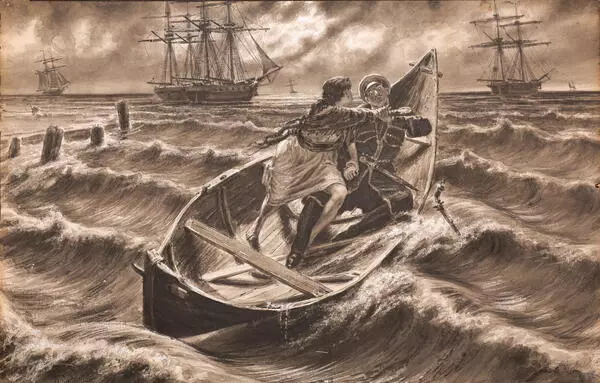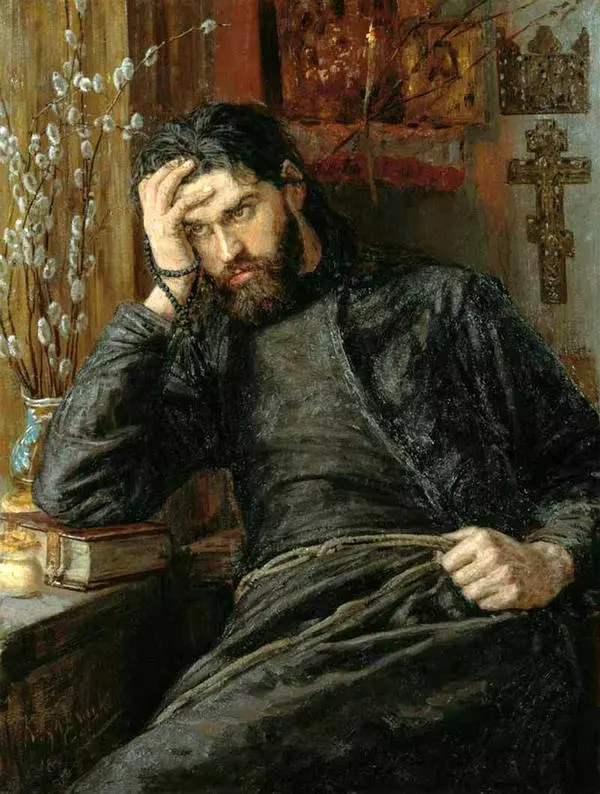Among the outstanding figures of art and culture born in Taganrog, the artist of the Peredvizhniki movenment Konstantin Savitsky (June 6, 1844, Taganrog - February 13, 1905, Penza) occupies an honorable place. The author of a number of large-scale canvases, he was one of the best painters of everyday life of the Russian peasantry. Savitsky showed himself to be a master of multi-figure ‘choral’ painting. Like Nekrasov, the ‘saddener of the people’s grief’ (FM Dostoevsky. Diary of a writer. 1877), he was able to convey vividly the variety of folk types and characters.
He devoted a lot of time and effort to teaching. At first, Savitsky taught at the Moscow School of Painting, Sculpture and Architecture, and later headed the Penza Art School. But no matter where the painter was, he always had the warmest memories of Taganrog. Almost fifty years later, Savitsky wrote with great sincerity about his homeland: “Deeply and firmly laid in my soul is all that surrounded me and what first shaped my world. Many long years have passed since I left my homeland being a child, but this did not separate me from it, on the contrary, the farther I am from those bright and warm memories, the stronger my heart beats for my homeland. Will a ray of happiness and joy shine in my life, will my brow frown with sorrow and grief, the city of Taganrog, the Sea of Azov, the Frankivka always warm and supportive, pictures of my homeland inspire my artistic creativity”. This is a quote from the artist’s response letter to the news about the Taganrog museum opening, received in 1902.
The canvas, interesting for its deep psychological nature of the image, is possibly a copy-repetition of an earlier painting by Savitsky ‘With a sick child in front of a miraculous icon’ (1893, unknown location). In the painting ‘Father’ (1896), the artist again touches upon the theme of man and religion, only this time in its private refraction. On a large canvas is shown the generation figure of a father who brought a sick child to church. Modest clothes, a rag-wrapped finger shows him as a simple laborer. Gently and firmly he presses the precious burden to his chest. The eyes fixed on one point are tormented by uncertainty and painful thoughts. The general color of muted brownish-red tones, the painful face of a sleeping child wrapped in a patchwork blanket, increase the tension and drama of the captured moment.
He devoted a lot of time and effort to teaching. At first, Savitsky taught at the Moscow School of Painting, Sculpture and Architecture, and later headed the Penza Art School. But no matter where the painter was, he always had the warmest memories of Taganrog. Almost fifty years later, Savitsky wrote with great sincerity about his homeland: “Deeply and firmly laid in my soul is all that surrounded me and what first shaped my world. Many long years have passed since I left my homeland being a child, but this did not separate me from it, on the contrary, the farther I am from those bright and warm memories, the stronger my heart beats for my homeland. Will a ray of happiness and joy shine in my life, will my brow frown with sorrow and grief, the city of Taganrog, the Sea of Azov, the Frankivka always warm and supportive, pictures of my homeland inspire my artistic creativity”. This is a quote from the artist’s response letter to the news about the Taganrog museum opening, received in 1902.
The canvas, interesting for its deep psychological nature of the image, is possibly a copy-repetition of an earlier painting by Savitsky ‘With a sick child in front of a miraculous icon’ (1893, unknown location). In the painting ‘Father’ (1896), the artist again touches upon the theme of man and religion, only this time in its private refraction. On a large canvas is shown the generation figure of a father who brought a sick child to church. Modest clothes, a rag-wrapped finger shows him as a simple laborer. Gently and firmly he presses the precious burden to his chest. The eyes fixed on one point are tormented by uncertainty and painful thoughts. The general color of muted brownish-red tones, the painful face of a sleeping child wrapped in a patchwork blanket, increase the tension and drama of the captured moment.
